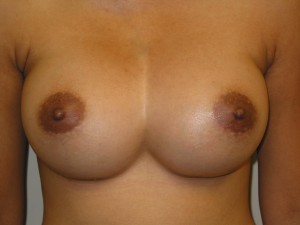Breast augmentation is among the most common plastic surgery procedures that women chose and is associated with an extremely high satisfaction rate in the vicinity of 94%. Despite such an astounding level of happiness, there are many variables and issues that can lead to less than desirable results. One relatively uncommon problem is where the two breasts seem to coalesce into one larger unit which is scientifically called symmastia (also synmastia) or in lay terms, a uniboob. In this situation, the breast implants can move or be moved so far to the midline that they may actually touch each other.
What are the causes and who is at a greater risk of developing this deformity? In general, women who are fairly thin and those who have a chest wall deformity known as pectus excavatum (where the sternum has a caved in appearance) are at a higher risk. This is risk is further amplified by a desire to have their breasts situated close together and by the selection of disproportionately large implants.
Symmastia is usually the result of overzealous dissection of the implant pocket medially (near the midline). In attempting to decrease the distance between the breasts so as to facilitate more cleavage, a surgeon may over-release tissue that is normally adherent to the underlying sternum. This allows the implants to migrate so far to the midline that they may actually touch. The skin then redrapes over the breast implants rather than discretely attaching to the sternum which results in the amorphous shaped uniboob versus two well defined breasts. Symmastia occurs both with breast implants that have been placed in submammary and submuscular pockets.
A few treatment options are available to correct this deformity including a relatively new approach using specially processed tissue (Alloderm® and Strattice®). Repair of symmastia can be very challenging and the results not always ideal. Selecting smaller and less wide implants will also assist in obtaining a more predictable and permanent correction.
If you would like additional information on symmastia, breast augmentation, breast implants, mastopexy or any other plastic surgery procedure or to schedule a consultation, you can call my office at 480-451-3000.
Steven H. Turkeltaub, M.D. P.C.
Scottsdale and Phoenix, Arizona

